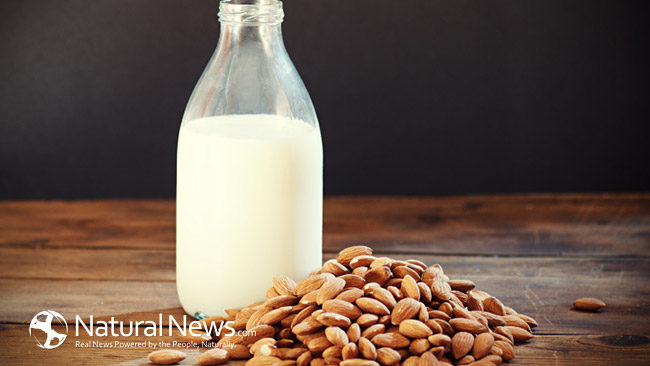Almonds are a part of the tradition of many cultures of the world. The ancient Romans brought sugar almonds as a gift to their friends and at weddings, they threw almonds at the bride and groom as a fertility symbol. This custom was later transferred to the whole of Europe, where the almonds symbolized not only fertility, but also love, good health and happiness.
Swedes still use almonds for Christmas. One almond, hidden in rice pudding, believing that whoever finds it, will have good luck throughout the following year.
How can we use the almonds?
Although the first association of almonds is in culinary preparation of various sweets, its application is much wider, from breakfast to many savory dishes, which gives a special flavor. For breakfast, crushed or chopped into slices, almonds can be added to cereal and dried apricots, or yogurt mixed with dried fruit of your choice. They can also be served as a snack with fresh apples, bananas and grapes. Almonds perfectly go with chicken and fish.
There are two types of almond. Sweet almonds are eaten raw, fried, in addition to other dishes, or are processed for the production of almond butter, oil or milk. The bitter almond is used only for production of essential oils, because it is toxic and not edible.
Which are the most important health benefits of almonds?
- As a fruit, almond is extremely rich in copper, manganese, magnesium, phosphorus, zinc, iron and calcium.
- It is an excellent source of vitamin E and B complex – riboflavin, niacin and thiamine. Almonds are a leading source of vitamin E in foods, because they contain alpha-tocopherol, a powerful antioxidant that has the ability to lower cholesterol 8-12 percent.
- Several major epidemiological studies confirmed that almonds protect the heart from attack. To avoid heart disease is sufficient to consume 45 gr. daily of this precious fruit.
- These large amounts of manganese and copper in almonds protect the nervous and the endocrine systems, maintain strength and bone health, normal blood pressure and encourage optimal functioning of the thyroid gland.
- It is very useful for weight loss too, because it gives the feeling of satiety, which is very important in the fight against obesity.
- Almonds are excellent source of calcium for people who are allergic to milk and dairy products. It has been calculated that 30 grams of almonds contains the same amount of calcium as a quarter cup of milk. Because of these properties, but also because of the presence of folic acid, almonds are recommended for pregnant women.
- Almonds have the so-called probiotic properties, with which increase the level of good bacteria in the intestine and contribute to the health of the digestive tract, showed a recent study. Scientists have found that finely ground almonds significantly increases the level of good bacteria, by using unsaturated fats from almonds for their growth and activity.
How to simply make almond milk and almond butter
Almond milk
The easiest way to make almond milk is:
Soak in water one cup of almonds overnight. The next morning, put them in blender or food processor. Pour 3 cups of water and blend (the amount of water is optional, it depends how thick you want the milk to be). When you get milky-like mass, strain through cheesecloth. And that’s it! You can add honey or some other sweetener if you like, but the basic is just the same. You could also peal the almonds before blending them, but that depends of your taste.
Almond butter
This is one healthy alternative that you’ll love it! Almond butter is so easy to make that it sounds incredible.
You just need almonds and a powerful blender or food processor. All you have to do is put the almonds in the blender and press the button. The process is slow and at first it will look like you aren’t going anywhere with this procedure.
First you’ll get a crushed almonds, then almond powder, but be patient. The more you blend, the more the oils in the almonds will start to release from its cells. You’ll get to the phase where you’ll get one sticky ball in your blender, but that just means that you’re doing it great! Be patient till you get one fine, creamy mass… And that’s it!
This may take you 10-15 minutes blending, but it’s so worth it!
Sources:
http://www.health.com/health/gallery/0,,20676415_8,00.html
https://www.organicfacts.net/health-benefits/seed-and-nut/health-benefits-of-almonds.html
http://nutritiondata.self.com/facts/nut-and-seed-products/3153/2
http://www.ncbi.nlm.nih.gov/pubmed/24315808
http://www.coolhealthyrecipes.com/easiest-recipe-healthy-almond-milk/
http://www.livestrong.com/article/376742-almond-butter-benefits/





